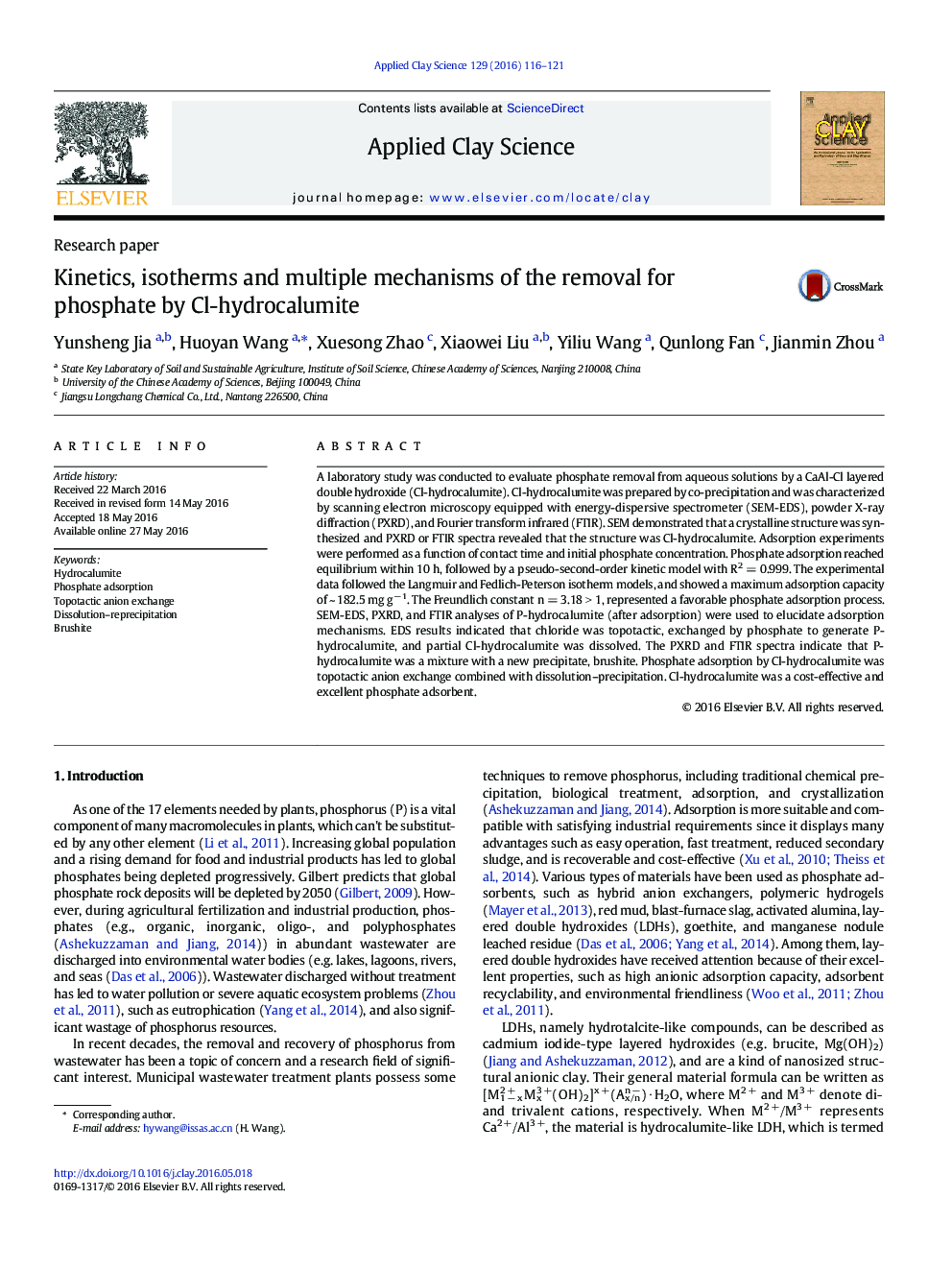| کد مقاله | کد نشریه | سال انتشار | مقاله انگلیسی | نسخه تمام متن |
|---|---|---|---|---|
| 1694029 | 1519057 | 2016 | 6 صفحه PDF | دانلود رایگان |
• The maximum adsorption capacity of phosphate by Cl-hydrocalumite was 182.5 mg g− 1.
• Brushite was generated by Cl-hydrocalumite action with phosphate under pH 4–7.
• Adsorption mechanisms contained both topotactic anion exchange and dissolution–reprecipitation.
• Evidence for multiple adsorption mechanisms was provided by SEM-EDS, PXRD, and FTIR.
• Phosphate adsorption by Cl-hydrocalumite allows for phosphorus recycle and reuse.
A laboratory study was conducted to evaluate phosphate removal from aqueous solutions by a CaAl-Cl layered double hydroxide (Cl-hydrocalumite). Cl-hydrocalumite was prepared by co-precipitation and was characterized by scanning electron microscopy equipped with energy-dispersive spectrometer (SEM-EDS), powder X-ray diffraction (PXRD), and Fourier transform infrared (FTIR). SEM demonstrated that a crystalline structure was synthesized and PXRD or FTIR spectra revealed that the structure was Cl-hydrocalumite. Adsorption experiments were performed as a function of contact time and initial phosphate concentration. Phosphate adsorption reached equilibrium within 10 h, followed by a pseudo-second-order kinetic model with R2 = 0.999. The experimental data followed the Langmuir and Fedlich-Peterson isotherm models, and showed a maximum adsorption capacity of ~ 182.5 mg g− 1. The Freundlich constant n = 3.18 > 1, represented a favorable phosphate adsorption process. SEM-EDS, PXRD, and FTIR analyses of P-hydrocalumite (after adsorption) were used to elucidate adsorption mechanisms. EDS results indicated that chloride was topotactic, exchanged by phosphate to generate P-hydrocalumite, and partial Cl-hydrocalumite was dissolved. The PXRD and FTIR spectra indicate that P-hydrocalumite was a mixture with a new precipitate, brushite. Phosphate adsorption by Cl-hydrocalumite was topotactic anion exchange combined with dissolution–precipitation. Cl-hydrocalumite was a cost-effective and excellent phosphate adsorbent.
Figure optionsDownload as PowerPoint slide
Journal: Applied Clay Science - Volume 129, August 2016, Pages 116–121
